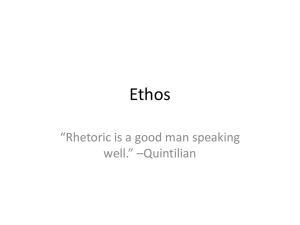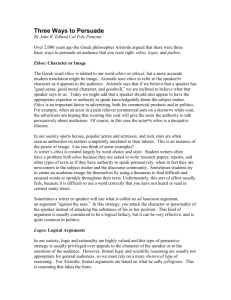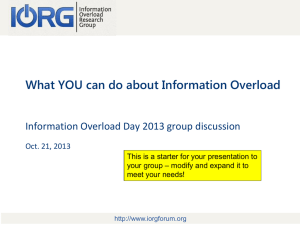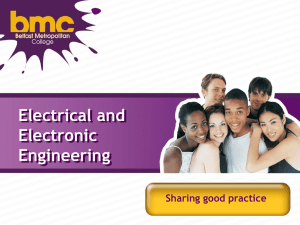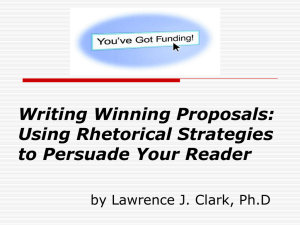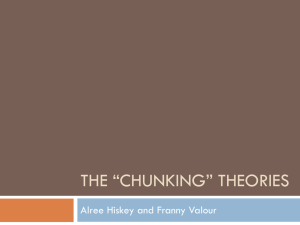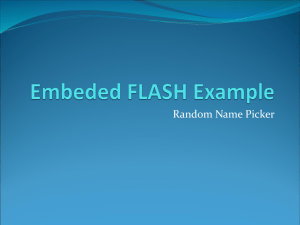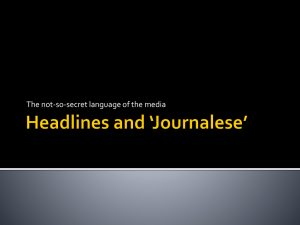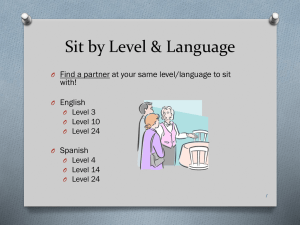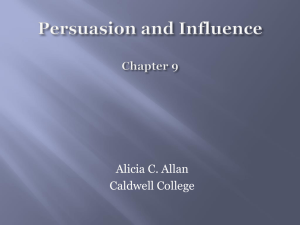PowerPoint Pointers
advertisement
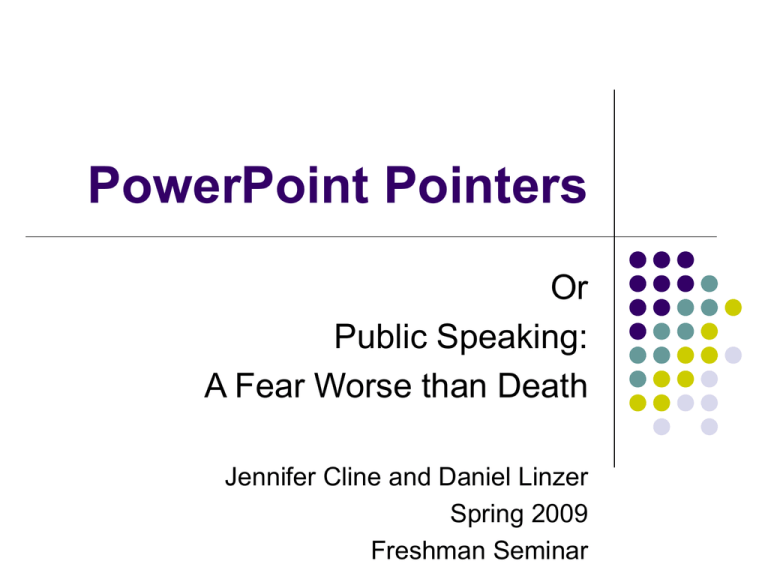
PowerPoint Pointers Or Public Speaking: A Fear Worse than Death Jennifer Cline and Daniel Linzer Spring 2009 Freshman Seminar Today’s Agenda Your upcoming presentations What we expect Why so many days Writing PowerPoint presentations Public speaking basics How to Get an A on Your Presentation Your assignment In 7-10 minutes, present 1. 2. 3. Compelling claim Distinctive example Context Do these things very well 1. Compelling Claims = News “So what, who cares, what’s in it for me?” Here’s how scientists think State significance of topic Tell what we already know Keep it relevant Point out gap Outline current research 2. Examples are Your Data Claim = conclusion you draw based on data Show us how to interpret your results Make us trust your data; we’ll buy the claim 3. Context Puts You in the Debate Professional researcher’s work adds to the body of knowledge Remember how scientist’s think … How does yours? Writing Presentations Designing a Talk Planning writing Revising Editing Practice, practice, practice! Planning the Talk It’s Not about YOU What does your audience need? What it is to not know Talk to them before List their questions Move from what’s known to what’s new Take Command of the Tools Don’t be a slave to software! Reset “auto fit,” etc. Excel defaults ≠ best practices Pick a design template carefully What image do I want to portray? What is the room like? Well-Lit Rooms Dimly-Lit Rooms 1 in 12 Men and 1 in 20 Women Many People are Color Blind Writing Slides Practical Tips for Success Five Rules to Prevent PowerPoint Overload Signal with clear headlines Segment into logical chunks Move narrative ↓ so you can talk and show Make images and words do double duty Tell one story Intro, body, and conclusion Atkinson and Mayer 2004 Write a Story Board, Not a Script or Outline Use headlines Clearly signal what is important Outline Preview Repeat Plan in Chunks Segments help the learner Bite sized chunks of info Use the slide sorter Moving toward revising, editing … Reduce Visual Overload Use many modes Talk to the audience Move narrative to notes pages Make slides do double duty Work for speaker with cues Words and images Work for audience Having both increases learning Edit Ruthlessly Murder Your Darlings! Too much info overwhelms On each slide In each talk Tell one story Keep only what supports key message Does Your Draft Measure Up? Five Rules to Prevent PowerPoint Overload 1. Signal with clear headlines 2. Segment into logical chunks 3. Move narrative ↓ so you can talk and show 4. Make images and words do double duty 5. Tell one story Intro, body, and conclusion Atkinson and Mayer 2004 Practice, Practice, Practice! Public Speaking Basics A presentation is a speech Opening Body Get attention, preview, perspective Simple, not simplistic Tell a story Conclusions Don’t just stop Research is Persuasive Rhetoric Aristotle’s three forms of persuasion Ethos Pathos Logos Aristotle on Ethos Persuasion is achieved by the speaker's personal character when the speech is so spoken as to make us think him credible We believe good men more fully and more readily than others: this is true generally whatever the question is, and absolutely true where exact certainty is impossible and opinions are divided. . . [C]haracter may almost be called the most effective means of persuasion he possesses Aristotle, Rhetoric 1.2.1356a.4-2 Ethos is . . . Developed in the message Dynamic A caused response Eliciting Positive Ethos Be prepared Know the logistics and message Be natural Be honest Be lively Be appropriate Appropriate Non-Verbal Communication Appropriate dress and demeanor Eye contact = trust Good posture enhances breathing and voice Move or gesture to underscore meaning Contained energy Let’s Practice! In 5 minutes, construct a 1-2 minute talk Opening Body Supporting evidence, detail Conclusion Get attention, outline, why “important” Highlight take home message Strong finish Peers keep time, provide 2-3 minutes of positive feedback on content and style If You Learn Only 3 Things … 1. Planning is key 2. 3. Know your message, logistics, and what the audience needs End strong Practice, practice, practice! It helps overcome nerves Hearing it out loud helps revise and edit Ask a colleague to listen to and critique your talk
